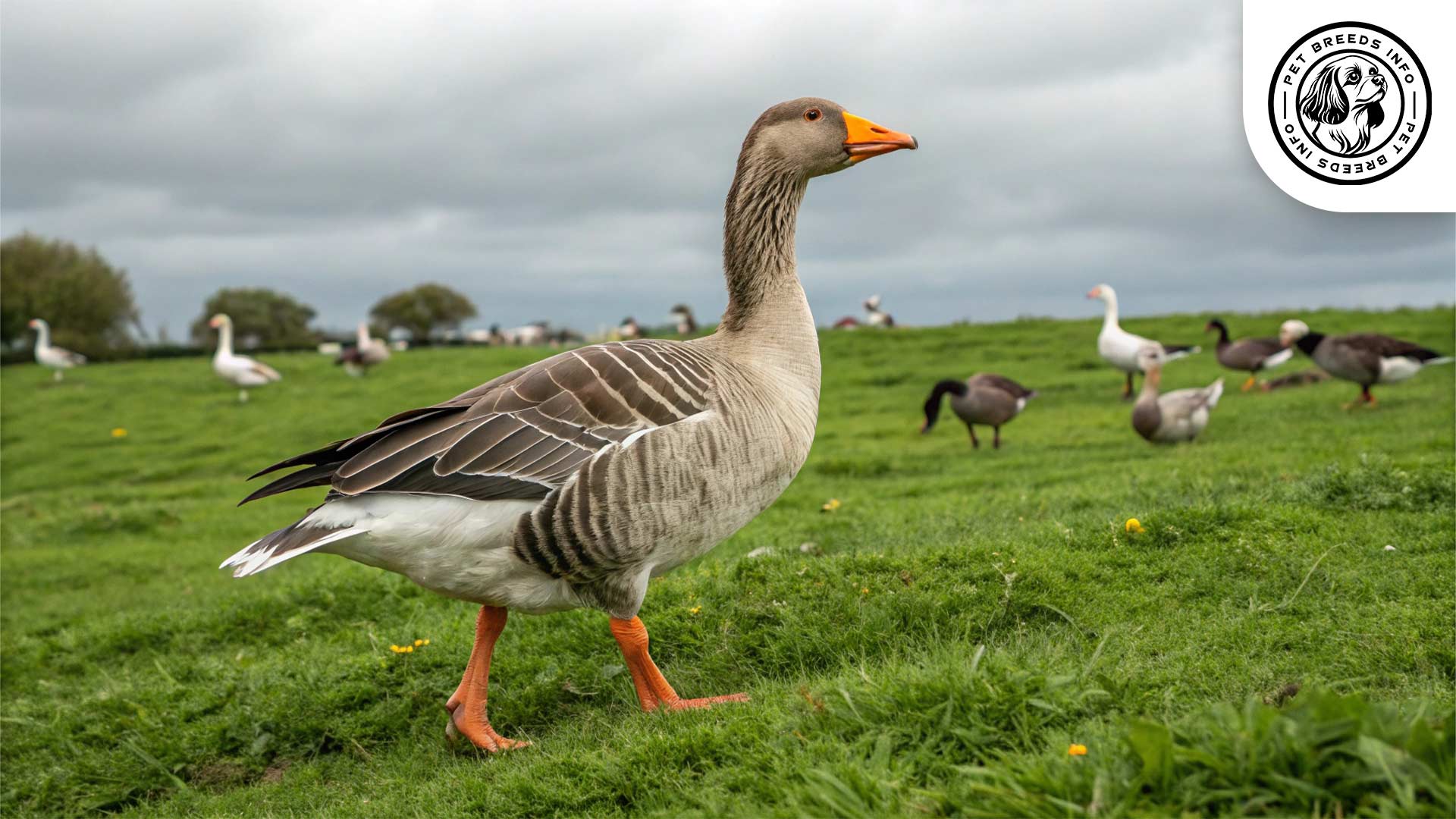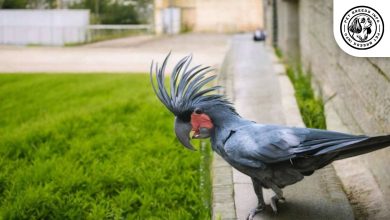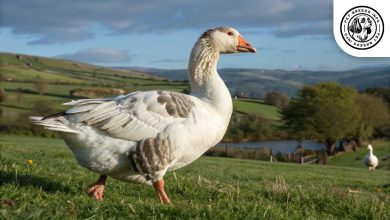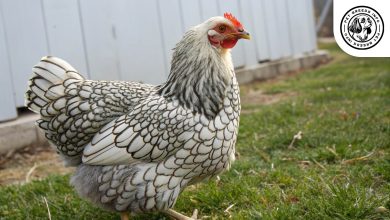Greylag Goose Breed: Personality, Lifespan, Food & Care
General Introduction of the Breed
The Greylag Goose (Anser anser) is the ancestor of most domesticated geese varieties found worldwide. Domesticated breeds have been developed in Europe and parts of Asia for centuries, particularly for farming, egg production, and companionship.
Early domestication of Greylag Geese dates back at least 3,000 years, with evidence from ancient Egypt and Rome depicting these birds as valuable livestock. Today, many breeds of domestic geese, including the Embden, Toulouse, and Chinese Goose, have descended from the Greylag Goose.
Table of Contents
| Common Name | Domesticated Greylag Goose |
| Scientific Name | Anser anser |
| Origin | Europe and parts of Asia |
| Size | Large (Males: 8–12 kg, Females: 6–9 kg) |
| Lifespan | 15–25 years |
| Colors | White, gray, or mixed gray-white |
| Talking Ability | Low – Communicates with honks and calls rather than mimicking |
| Noise Level | Moderate to high – Loud alarm calls when alert |
| Social Behavior | Highly social, bonds with humans and flock, may be territorial in breeding |
Physical Characteristics
Domesticated Greylag Geese are generally larger than their wild ancestors. Adult males can weigh between 8 to 12 kg, while females typically range between 6 to 9 kg.
The domesticated Greylag Goose has a thick, well-feathered body with dense plumage. Common colors include white, gray, and mixed gray-white variations.
They have large, round eyes, usually dark brown or deep black. Their beaks are typically orange or pink, and their legs are sturdy and well-adapted for a farm setting.
Their tails are short and well-formed, while their wings are slightly smaller relative to their body size, making them less capable of flight than wild Greylag Geese.
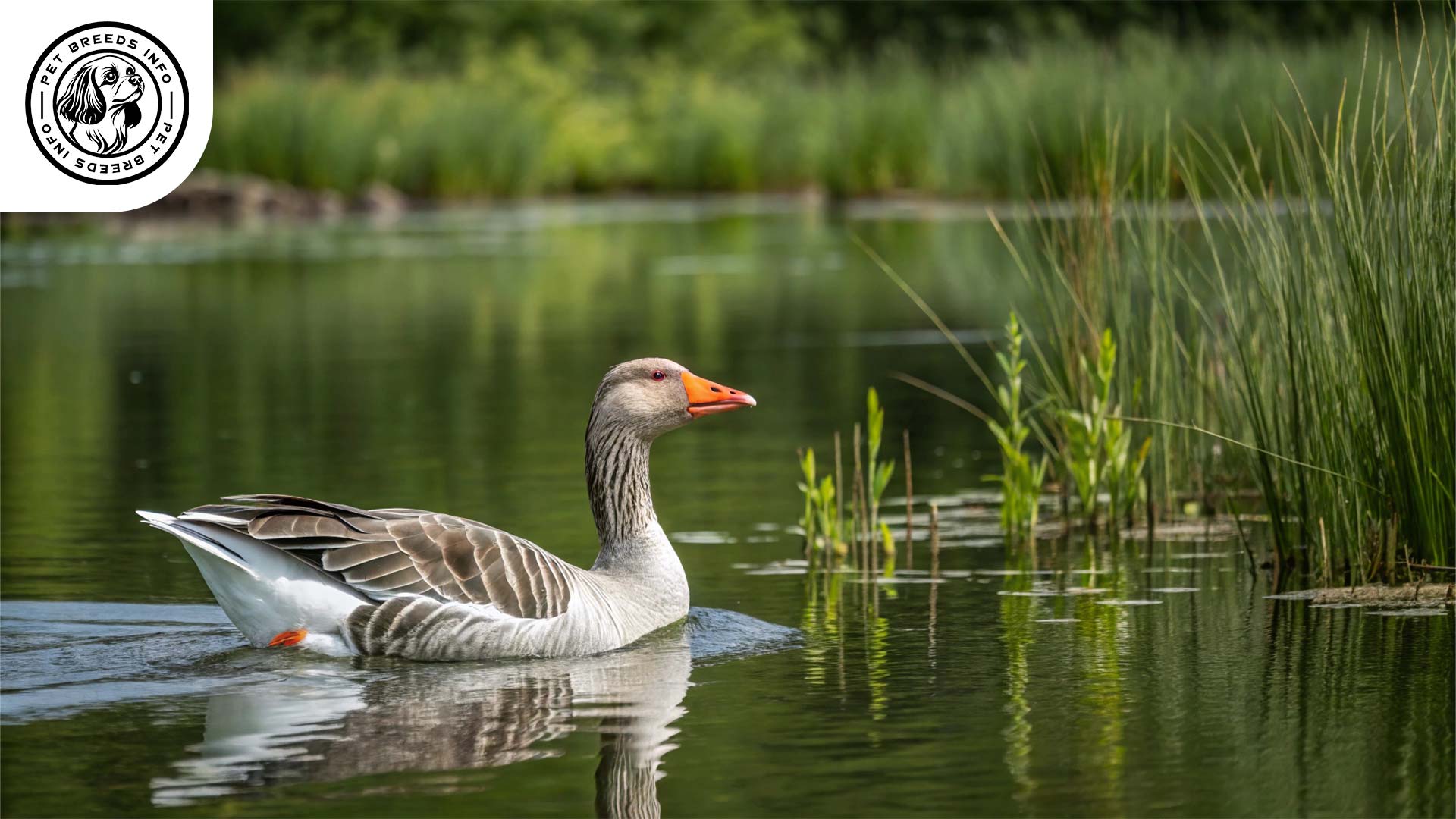
Personality and Temperament
Domesticated Greylag Geese are highly intelligent and quickly learn routines, especially when raised among humans from a young age.
They are social birds with a moderate energy level. They enjoy foraging and swimming but do not require excessive activity beyond their usual outdoor routines.
Many domesticated geese form strong bonds with their owners, recognizing their voices and following them around.
They get along well with humans and farm animals, including ducks and chickens. However, they can be territorial, especially during the breeding season.
They display natural guarding instincts and can be protective of their environment, sounding loud alarms when strangers approach.
Care and Maintenance Requirements
Greylag Geese require access to outdoor space, preferably with a pond or small water source where they can bathe and preen.
They are not well-suited for indoor or apartment living due to their space and environmental needs.
Grooming is minimal, as they maintain their feathers through frequent self-care, including bathing and preening. However, regular observation for signs of overgrown beaks or foot conditions is necessary.
These geese are hardy birds but require protection against extreme weather conditions. A well-ventilated but insulated shelter helps them stay comfortable in winter.
Keeping their living area clean is essential. Their bedding should be changed frequently, and they require access to clean drinking water at all times.
Diet and Nutrition
The best diet for domesticated Greylag Geese includes a mix of grains, grasses, and vegetables. High-quality waterfowl pellets provide a balanced diet.
They should have constant access to fresh pasture or green vegetation such as lettuce, clover, and dandelions.
Foods to avoid include processed human food, avocado, chocolate, and foods high in salt or fat, as these can be harmful.
Read More: Cotton Patch Goose
The recommended feeding schedule includes free-feeding with access to clean water throughout the day, supplemented with additional grains in the morning and evening.

Health and Common Medical Issues
Common health concerns for domesticated Greylag Geese include bumblefoot (a bacterial foot infection), parasites, and angel wing (a deformity caused by poor diet).
Providing a balanced diet and a clean environment helps prevent most health issues.
The average lifespan of domesticated Greylag Geese ranges from 15 to 25 years with proper care.
Vaccinations and routine veterinary check-ups help ensure they remain healthy. Worming treatments and parasite control are often recommended for geese kept on farms or outdoor enclosures.
Training and Behavior Management
Training domesticated Greylag Geese is relatively easy when done from a young age. They respond well to routine and can be taught to return to specific enclosures at night.
Socializing geese early helps prevent aggressive or territorial behavior. They should be handled gently to build trust.
Read More: Cornelia Eclectus Bird
Positive reinforcement, such as offering treats or verbal praise, helps encourage good behavior and prevent undesirable habits like excessive honking.
Interaction with Other Animals and Humans
Domesticated Greylag Geese are excellent companion animals for farms and backyards. They generally do well with children but should always be supervised, especially during breeding season when they may act defensively.
They coexist well with chickens, ducks, and other waterfowl, although they may display dominant behaviors.
These geese are better suited for families or individuals who can provide outdoor space and regular interaction rather than as solitary pets.
They thrive on socialization and dislike being left alone for long periods, forming strong bonds with their flock or human caretakers.
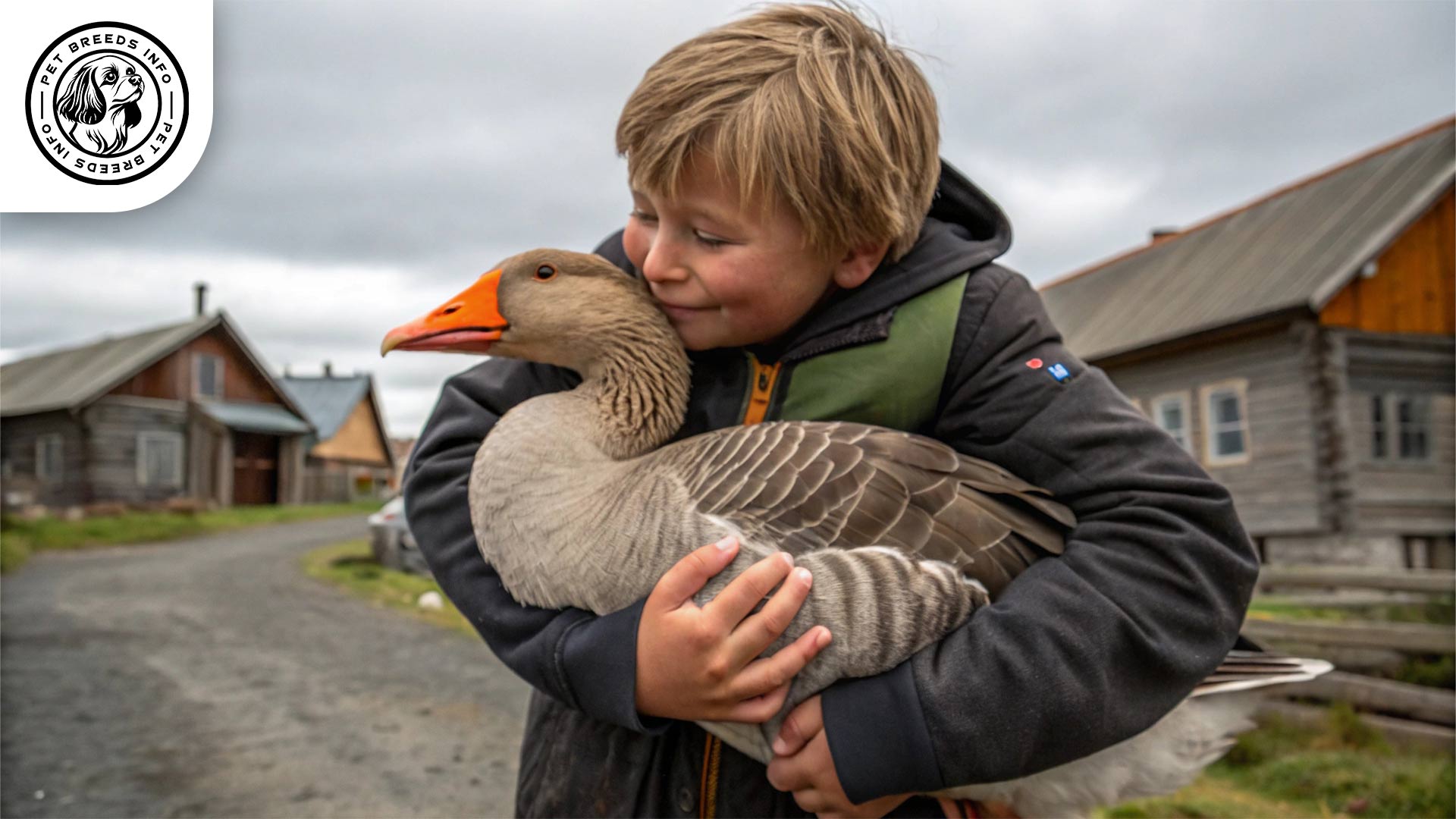
Price and Availability
The price of domesticated Greylag Geese varies depending on breed type, age, and location. Young goslings typically range from $10 to $40, while adult geese may cost $40 to $100 or more.
When purchasing, it is important to choose reputable breeders or farms that provide healthy, well-cared-for birds.
Adopting from rescue farms or waterfowl sanctuaries is also an excellent option for those looking to provide a home for geese in need.
Conclusion and Final Thoughts
The domesticated Greylag Goose is an excellent choice for those with sufficient outdoor space and a love for animals. They provide companionship, natural lawn maintenance, and even act as farmyard “guard dogs” with their alert honking.
Read More: Eclectus Parrot Bird
They are best suited for individuals or families with farmland, backyards, or pond areas where geese can thrive. Proper diet, access to fresh water, and protection from extreme weather are essential.
Potential owners should consider their long lifespan and the need for a safe and suitable outdoor environment before adopting these birds. With proper care, domesticated Greylag Geese can become affectionate, intelligent, and beneficial members of a rural or homestead setting.
FAQ
Are Greylag Geese good pets for families with children?
Yes, they bond well with humans and are generally good with kids, but supervision is needed during breeding season.
Can domesticated Greylag Geese fly?
Their flight ability is limited due to their large size and shorter wings compared to wild geese.
What do domesticated Greylag Geese eat?
They eat grains, grasses, vegetables, and waterfowl pellets. Fresh greens and clean water should always be available.
How do Greylag Geese behave around other animals?
They coexist well with ducks and chickens but can show dominance, especially when nesting.
